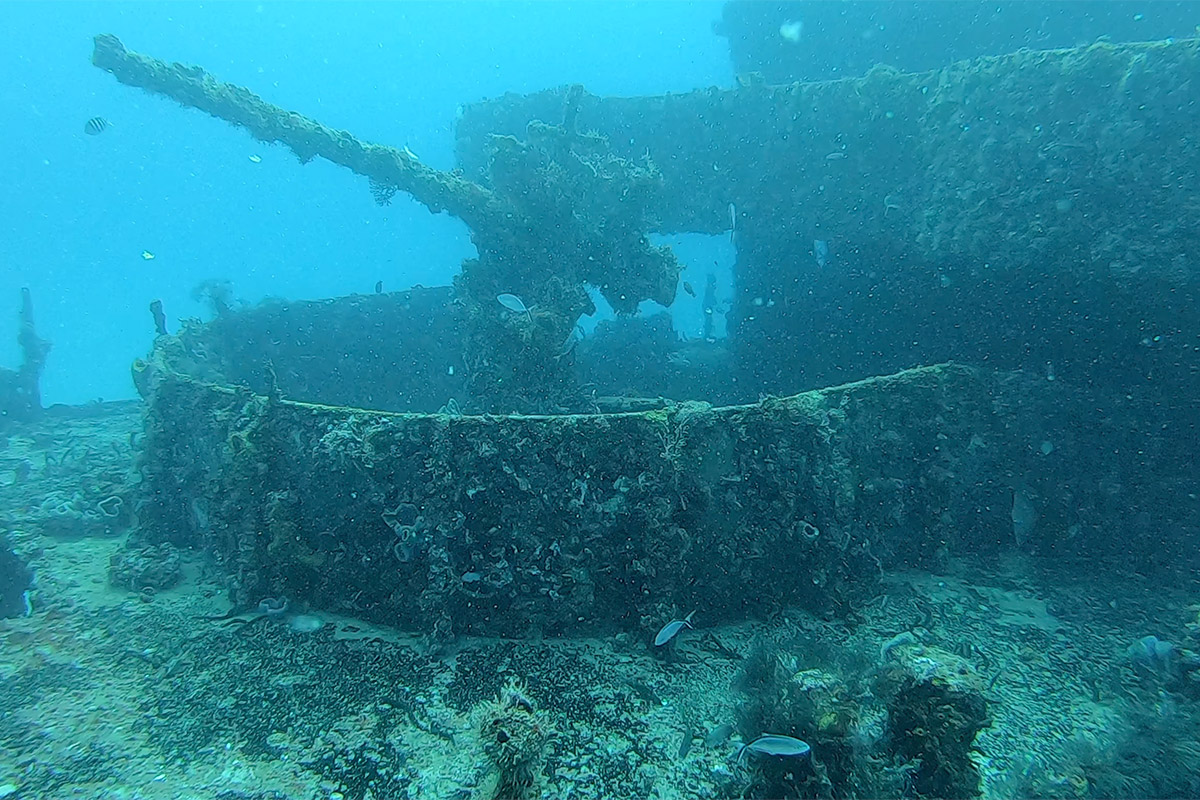- More More
- Blog
- Inspire me
- Groups
- Offers More
- Dive Courses More
- Liveaboards
More

Liveaboard Trips
On-board accommodation offering the opportunity to live right over the dive sites and to experience secluded dives...
Diving regions...
- LATEST AVAILABILITY BY REGION
- Red Sea availability
- Maldives availability
- Indonesian availability
- Socorro Mexico availability
- Galapagos availability
- ALL LIVEABOARD DIVING REGIONS
- Bahamas
- Bikini Atoll
- Caribbean
- Cocos Island
- Destinations
MoreDIVING REGIONS...
Our Top destinations....Why not try....
Find a trip
- Resort
- Liveaboard
What to Expect on a Diving Holiday to Riviera Maya

6 Jul 2023, Jo Charter
On the east coast of Mexico lies the lively town of Playa del Carmen, approximately an hour south of Cancún airport. Playa del Carmen offers a wide variety of diving to suit all requirements and levels. My recent trip gave me a wonderful insight into what the area has to offer.
From the mainland, divers can explore the ocean reefs along the Riviera Maya coastline. The reefs have a colourful mix of classic Caribbean corals and are populated by large shoals of grey snapper and porkfish, which form highways along the overhangs. I also saw spider crabs, nurse sharks, flounders, flamingo tongue snail, and plenty more marine life.

There are wrecks to explore too, many of which were purposefully scuttled to create artificial reefs, so they have good access routes inside. Barracuda and rays circle the wrecks, making for excellent sightings during your time on the line.

If sharks are your thing, then during the winter months (November to March) it is possible to see bull sharks during feeding dives along the Rivera Maya coastline.

Mainland-based divers also have the option to take a day trip over to Cozumel, a more peaceful island with azure waters, swim-throughs, and an abundance of marine life. Drift diving is a popular option there as the water pushes between the island and the mainland, the currents bring with them rich waters, creating the giant sponges and attracting large schools of Bluefin trevally, eagle rays, and turtles. The architecture of the corals here is much more interesting than the mainland, and they are more vibrant. There are accommodation options on Cozumel island, for those looking for a more tranquil holiday. Cozumel is also ideal if you have more time and want to split it between two locations.

Mexico's Cenotes are a real must-see. These are a collection of chambers, caverns and cave systems on the Yucatán Peninsula, created in the limestone by underground waterways and sinkholes. The sun shines down through the breaks in the tropical canopy and enters the crystal-clear water, creating iconic sunbeams. Further inside, you’ll discover stunning geological formations which were created before the space was flooded, freezing that moment in time as a living museum for divers to explore. There are a variety of cenotes in the area, from shallow and relatively open spaces, to deeper and darker structures. These dives were by far my favourite experience during my time away.

From Playa del Carmen, you can enjoy a snorkelling excursion to see Mexico’s iconic gentle giants: whale sharks. Between June and September, these large pelagics congregate in giant numbers around Isla Mujeres and Isla Holbox, along with the occasional manta ray, dolphin pod, and a turtle or two for good company! We were lucky enough to have interactions with three individuals ranging from five to eight metres in length.

On a good day, there can be over 100 whale sharks in the area. This trip does come with fair warning, it can be bumpy and rocky when you’re in the open ocean. Sea sickness tablets are advised for those who need them (myself included!).
The ocean diving along the mainland and Cozumel is suitable for all levels: learn-to-dive and upwards, and snorkellers too. To get the most out of the Cenotes diving, I recommended logging at least 30 dives and completing the Advanced Open Water qualification (or equivalent), with a focus on developing excellent buoyancy skills. However, there are options for less qualified divers if it’s a must for you. Speak to one of our team to work out the best option for you.

I’ve only covered the scuba and snorkelling activities in the Riviera Maya area, we haven’t even scratched the surface of the top side activities - Mayan ruins, temples and jungle tours to name a few! Mexico really does have something for everyone, and I thoroughly enjoyed exploring. Cenotes, I’ll see you again!
To find out more about diving holidays to Riviera Maya, you can contact our expert team of divers.





